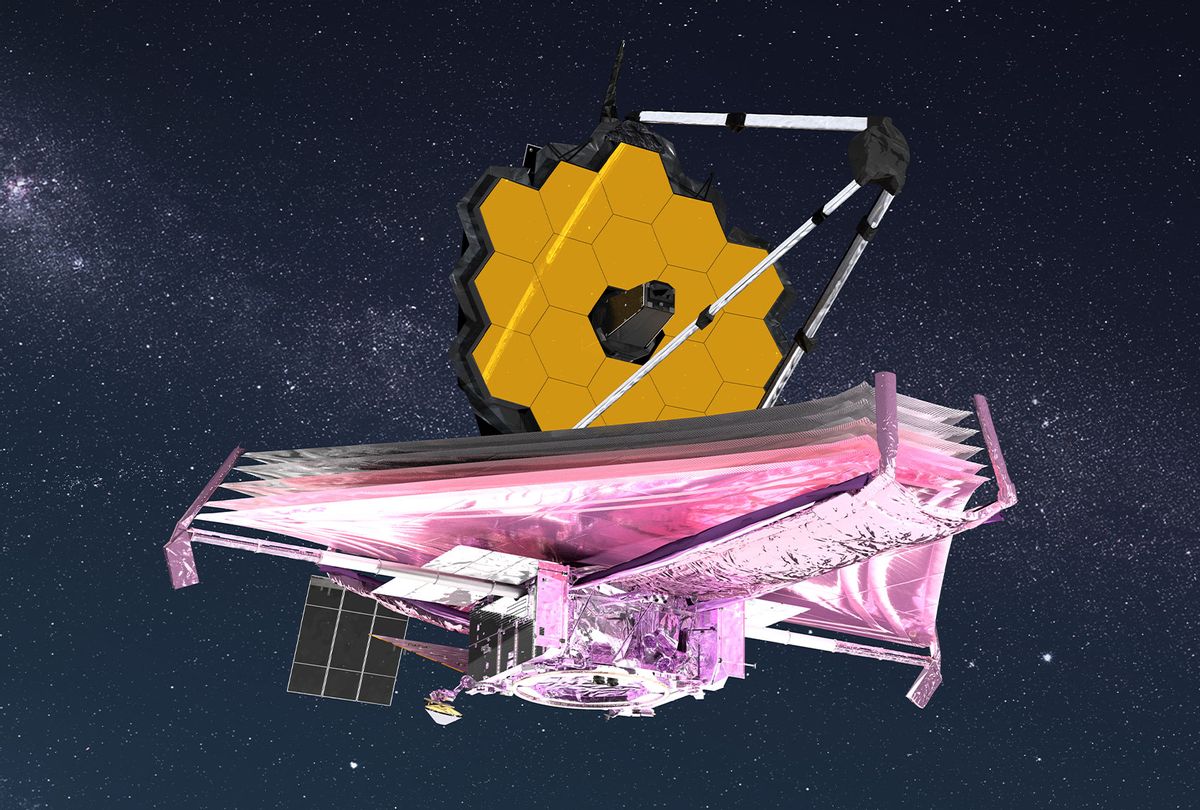
When the James Webb Space Telescope released five breathtaking images of the universe earlier this month, it brought decades of precise engineering and astronomical work to a head. When those images were revealed last week, the build up was so intense that NASA Administrator Bill Nelson compared the scene to a pep rally rather than a supposedly staid scientific gathering.
Yet that pep may have dissipated since last week in light of the recent news that the telescope, despite its immense technological sophistication, has suffered uncorrectable damage due to a micrometeoroid.
RELATED: The James Webb Telescope has already found previously-undetected water on a distant planet
According to a report posted in the pre-print database arXiv.org, a small rock collided with one of the telescope's 18 gold-plated mirrors, causing significant damage in the process. More specifically, the C3 mirror has a bright white dent where there should be gold at the location where the micrometeoroid made impact. Although NASA describes the damage as "uncorrectable," they added that it has not impaired the telescope's overall performance.
Want more health and science stories in your inbox? Subscribe to Salon's weekly newsletter The Vulgar Scientist.
"The micrometeoroid which hit segment C3 in the period 22—24 May 2022 UT caused significant uncorrectable change in the overall figure of that segment," the report explains. "However, the effect was small at the full telescope level because only a small portion of the telescope area was affected." The report explains that "two subsequent realignment steps" helped to correct the problem.
Dr. Thomas Zurbuchen, Associate Administrator at NASA's Science Mission Directorate, foreshadowed the agency's ability to move beyond this setback when he tweeted in June about early reports regarding micrometeoroid impacts on the telescope.
"Micrometeoroid strikes are an unavoidable aspect of operating in space," Zurbuchen wrote. "Recently, Webb [telescope] sustained an impact to one primary mirror segment. After initial assessments, the team found the telescope is still performing at a level that exceeds all mission requirements."
The new arXiv.org report goes on to explain that the tiny pebble which hit the C3 mirror was actually just one of 19 that slammed into the James Webb Space Telescope between February and May 2022.
The James Webb Space Telescope is particularly vulnerable to micrometeroid strikes because the telescope's mirrors are open and exposed to the vacuum of space. The Hubble Space Telescope, for all intents and purposes the technological predecessor to Webb, had a cylindrical housing inside which the observational technology sat. In contrast, the Webb telescope is functionally a giant reflector open to space with no protective sheath.
Yet aside from being smaller overall, the other reason Hubble has been remarkably free of damage over the years is because of its location in space. Hubble orbits comfortably just above Earth, close enough that astronauts from the Space Shuttle could approach and perform maintenance; whereas the Webb telescope is far away in a stable point in space where the sun and the Earth's gravity perfectly counterbalance each other, such that the telescope effectively stays still relative to Earth. However, because there have been few spacecraft sent to this point in space — known as the L2 point, short for LaGrange Point — astronomers have less knowledge of the micrometeoroid risk in the region. In contrast, low-to-medium Earth orbit, where Hubble lives, is saturated with human spacecraft and thus its risks are well-studied.
Space news website Space.com had a downbeat view on the otherwise optimistic tone of NASA's new report.
"Micrometeroids are a known danger of space operations, and facing them is by no means new to scientists; the International Space Station and the Hubble Space Telescope are among long-running programs that are still operational despite occasional space rock strikes," Space.com wrote. "However, Webb's orbit at Lagrange Point 2 about 1 million miles (1.5 million kilometers) away from the Earth may change the risk profile considerably."
Despite the setback with the C3 mirror, the James Webb Space Telescope has still been an undeniable success so far. In one of its recently-released images, the telescope ascertained the composition of the atmosphere of a distant planet called WASP-96b (which contained water). Other released images showed a planetary nebula called the Southern Ring Nebula; five nearly adjacent galaxies appropriately dubbed "Stephan's Quintet"; the Carina Nebula, which looks for all the world like a horsehair blanket pulled over a bright and colorful sky full of stars; and the blandly named SMACS 0723 — which is the most clear and full infrared image ever produced of the distant universe.
Read more
on astronomy:
https://ift.tt/t8OyNhF
Science
No comments:
Post a Comment